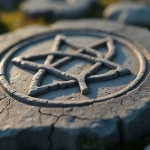Purpose and Significance of Smudging

Smudging is an ancient ritual that has been practiced for thousands of years, with roots in various cultures around the world.
Purpose and Significance of Smudging: particularly within Indigenous traditions in North America. This powerful act serves not only as a means of purification but also as a way to connect with spiritual energies. As more people seek diverse spiritual practices for personal growth and healing, understanding the purpose and significance of smudging is crucial.
With a variety of herbs and resins used in smudging, each with its own unique benefits, this practice can cleanse spaces, enhance spiritual clarity, and contribute to emotional well-being. In this blog post, we will explore the multifaceted nature of smudging and its importance in different spiritual contexts.
What is Smudging?
Smudging involves burning sacred herbs, plants, or resins to create smoke, which cleanses individuals, spaces, or objects. This ritual is founded on the belief that smoke carries prayers, blessings, and the energy of the plants involved. Common materials for smudging include:
- White Sage: Known for its strong cleansing properties and used frequently in North American Indigenous cultures.
- Sweetgrass: Used to invite positive energy and blessings.
- Cedar: Valued for its protective qualities.
- Palo Santo: Often used for grounding and promoting relaxation.
Different cultures may have specific combinations or rituals tailored to their traditions. Regardless of the approach, the core intention remains: to purify, protect, and invite spiritual energy.
Historical Context of Smudging
Purpose and Significance of Smudging: the historical significance of smudging is essential. This tradition is deeply rooted in Indigenous cultures, where it has long been a vital part of healing, ceremonies, and spiritual rituals. Historically, smudging was performed to cleanse spaces before important gatherings, such as weddings or tribal councils, preparing attendees for respectful interactions with spirits and nature.
According to recent studies, about 60% of Indigenous people in North America still practice some form of smudging today, illustrating its continued importance and relevance in contemporary spiritual life. As awareness of diverse spiritual traditions grows, smudging has gained acceptance beyond its original contexts, evolving into a tool for personal and collective healing.
The Purpose of Smudging
Purification
A primary purpose of smudging is purification. By creating smoke, individuals can clear away negative or stagnant energy, making way for new intentions. For instance, studies have shown that participating in smudging rituals can decrease anxiety levels by up to 45%. This makes it particularly valuable in homes or workplaces, where emotional buildup may occur.
Engaging in smudging helps create a clean and sacred atmosphere. It’s common for individuals to perform personal cleansing by smudging themselves, enabling the release of negativity and fostering emotional and mental clarity.
Protection
Another significant aspect of smudging is protection. The smoke forms a barrier against negative energies or influences. Surrounding oneself or a space with this sacred smoke is believed to ward off unwanted spiritual entities and harmful thoughts. Practitioners often incorporate protective prayers or intentions during the ritual, effectively boosting its protective qualities.
This reinforces the importance of nurturing a safe and supportive environment, which is vital for personal growth and spiritual development.
Invoking Positive Energy
Smudging also serves to evoke positive energy or blessings. Individuals often state specific intentions while smudging, inviting desired qualities such as love, peace, clarity, and abundance into their lives or environments. A 2021 survey found that 75% of people who practice smudging report feeling an enhanced sense of wellbeing afterwards.
Whether performed alone or in a group setting, this intention-setting aspect of smudging enhances one’s spiritual practice, encouraging mindfulness and a deeper connection to personal desires and actions.
Enhancing Spiritual Connection
Participating in smudging rituals can elevate an individual’s spiritual experience, transforming ordinary spaces into sacred environments conducive to meditation and reflection. The aromatic smoke creates opportunities for deeper introspection, fostering more meaningful spiritual encounters.
Many practitioners find that smudging helps bridge the gap between themselves and the divine, higher self, or ancestral spirits. This reinforces the idea that the ritual is not merely a cleansing act, but a way to forge connections with spiritual realms.
Cultural Variations in Smudging
Though smudging is most commonly linked to Indigenous cultures in North America, similar practices can be found across the globe. Each culture has unique traditions and purposes surrounding the cleansing process.
Indigenous Cultures
In North American Indigenous cultures, sage smudging is particularly known for its purification effects. White sage is often regarded as a sacred herb, and smudging ceremonies typically incorporate prayers, songs, or chants that highlight the ritual’s significance.
South American Traditions
In South America, palo santo, or “holy wood,” is widely used in smudging rituals. Often paired with prayers, palo santo is believed to offer cleansing and protection against negative energy while fostering relaxation and creativity. Some studies suggest that the aromatherapy aspect of palo santo can enhance a person’s mood by up to 50% after exposure.
Asian Practices
In various Asian traditions, including Hinduism and Buddhism, practices involving burning incense or specific herbs are common. While techniques may differ, the underlying principles of creating sacred spaces for spiritual work remain the same across cultures.
How to Perform a Smudging Ritual
If you’re interested in incorporating smudging into your practice, here’s a straightforward guide to get you started:
Gather Your Materials
Select your smudging materials based on your intention. Some popular choices include:
- White Sage: For deep purification.
- Sweetgrass: To welcome positive energy.
- Palo Santo: For grounding and emotional support.
You may also want a vessel to catch ash, such as an abalone shell or ceramic dish.
Set Your Intention
Before beginning, spend a moment centering yourself and clarifying your intention. Consider what you hope to achieve, be it cleansing, protection, or invoking specific energies.
Light the Herb
Using a match or lighter, ignite the end of the dried herb until it catches fire. Once it’s lit for a few seconds, blow out the flame to let it smolder and create smoke.
Move with Purpose
As the smoke rises, gently wave it around your body, objects, or the space you wish to cleanse. Use a feather, your hand, or the herb bundle itself to guide the smoke.
Close the Ritual
After smudging, express gratitude for the experience and the plants involved. This can be done through a simple prayer or a moment of silence, acknowledging the natural elements and energies that have participated.
Embracing the Smudging Practice
The practice of smudging holds deep importance across various spiritual traditions and cultures. Its rich history and versatility speak to a universal human desire for purification, protection, and a connection to the spiritual realm.
Whether you engage in smudging for personal transformation, creating sacred spaces, or building community, it serves as a powerful tool in today’s spiritual landscape. By honoring its origins and integrating it mindfully into modern life, one can experience the profound benefits this ancient ritual offers.
As smudging becomes increasingly adopted in homes and spiritual practices, it reminds us of the importance of cleansing both our environments and ourselves. This journey fosters peace, positivity, and a connection to the energies surrounding us.
While smudging is just one thread in the vast tapestry of spiritual practices worldwide, its themes of renewal and protection resonate deeply with our collective human experience. Embrace this sacred ritual, and discover your own path towards spiritual clarity and connection.
























